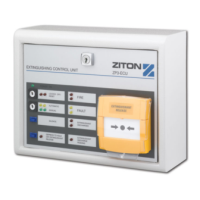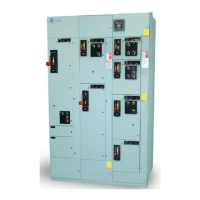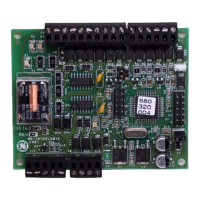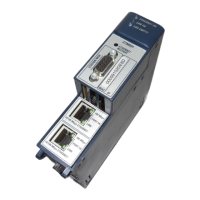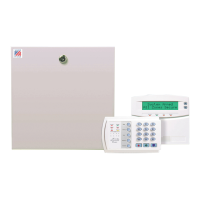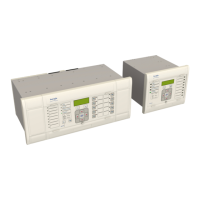EntelliGuard®TU Trip Unit
Section 1 – General Information 09/25/08
14 © 2008 General Electric All Rights Reserved
Current Alarm
The trip unit provides two types of current alarms:
Current Alarm 1 and Current Alarm 2.
The Current Alarm’s ON/OFF pickup settings are 0.5 to 1.0
xIn in steps of 0.05.
The trip unit does not allow the current alarm OFF
setpoint to be set above the ON threshold.
If the highest measured phase current goes above
Current Alarm 1 or Current Alarm 2 ON setpoint, and then
remains above the setpoint for more than 60 sec, the
output will close if assigned to either of these alarms.
If the current falls below the Current Alarm 1 or Current
Alarm 2 for more than 60 sec, the output, if assigned to
Current Alarm, will open.
ZONE SELECT INTERLOCK
The Zone Select Interlock (ZSI) function operates with a
group of series-connected breakers. The ZSI is achieved
with the use of the TIM module or an equivalent GE
qualified and recommended device.
ZSI Option
Per the trip unit catalog number there are two types of
zone-selective interlocking options:
• Z: reacts to ground faults and short time pickups.
• T: reacts to ground faults, short time and
instantaneous pickups. (Requires 24 VDC external
power be provided to the trip unit.)
The upstream breaker uses the ST ZSI and/or GF ZSI delay
bands and slope, and/or transition to a delay
Instantaneous if it receives a downstream ZSI signal.
The desired ZSI (ST and-or GF and-or Inst) must be
selected in order for the downstream breaker to issue a
ZSI signal, and the upstream breaker to act upon this
signal.
The ST ZSI Delay Bands are independent and have the
same bands available. Slope settings may also be
interlocked.
The GF ZSI Delay Bands are independent and have the
same bands available. Slope settings may also be
interlocked.
High Set Instantaneous Protection (HSIOC)
HSIOC is also Known as Override Pickup. Some of the trip
units on EntelliGuard G circuit breakers may be provided
with an override instantaneous trip.
Whether such a trip is provided or not depends on the
circuit breaker within which the trip is installed. If the
circuit breaker’s withstand (Icw) is equal to the short
circuit rating then the trip will not have an override
pickup. If the withstand rating is lower than the short
circuit rating then the trip will enable override protection
of the circuit breaker.
In UL 489 circuit breakers the HSIOC setting is nominally
at 107%of the Icw for the circuit breaker. Taking
tolerance into account, the override’s minimum trip is at
100% of the circuit breaker’s Icw.
In UL 1066 (ANSI) circuit breakers the HSIOC setting is
also at 107% Icw if the adjustable selective
instantaneous is ON. If the adjustable selective
instantaneous is OFF then the HSIOC nominal pick up is
at 98% of the circuit breaker’s Icw and, considering
tolerance, the minimum pickup is at 91% of the circuit
breaker’s Icw.
Power Break I, WavePro and AKR circuit breakers do not
employ an override function. PowerBreak II circuit
breakers use a mechanical override function.
Making Current Release (MCR)
Every EntelliGuard TU or EntelliGuard TU circuit breaker
uses a making current release. The making current
release varies per circuit breaker Envelope and is related
to the circuit breaker’s close and latch rating.
The MCR pickup is activated at the time the circuit
breaker closes and for six cycles thereafter. When the six
cycles are over, the threshold changes to the HSIOC
pickup setting.
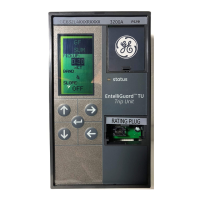
